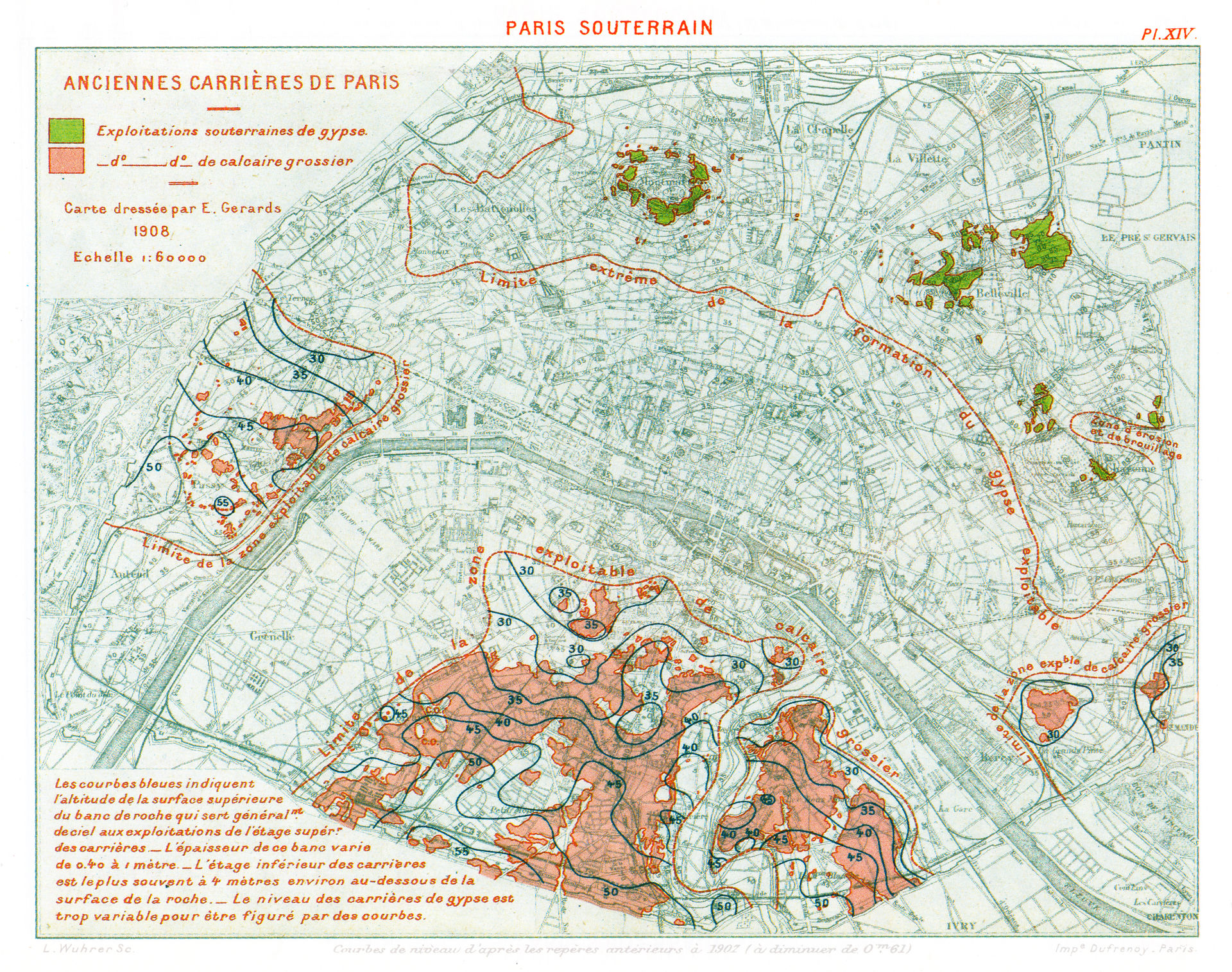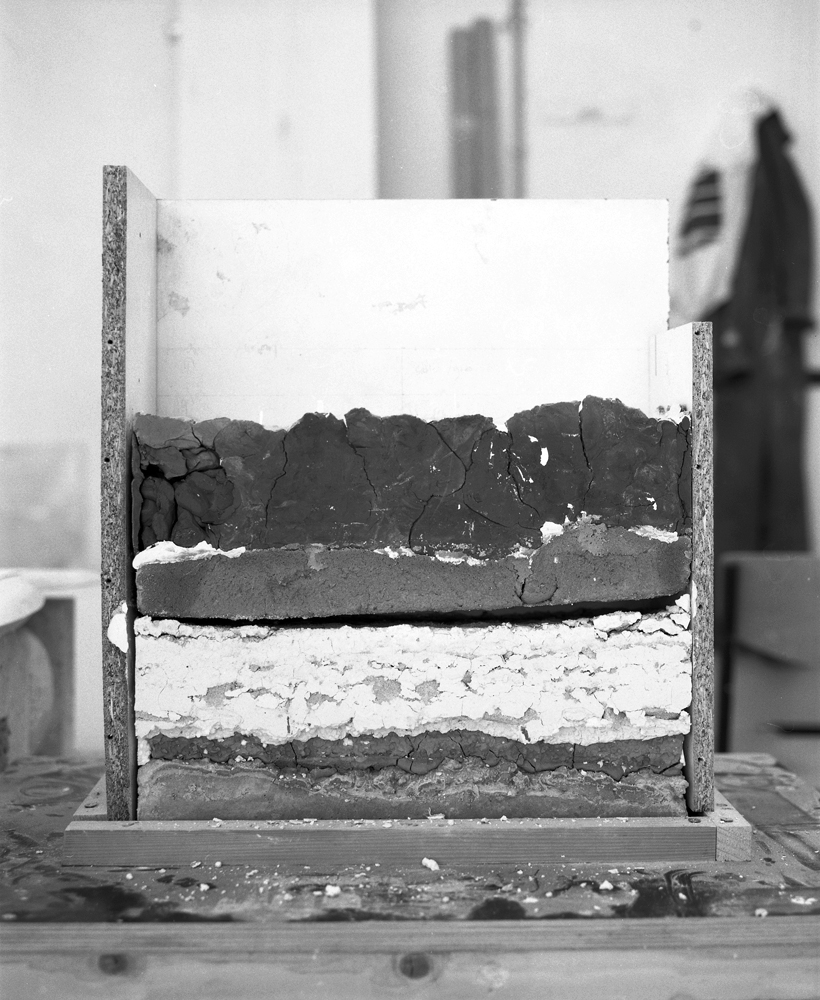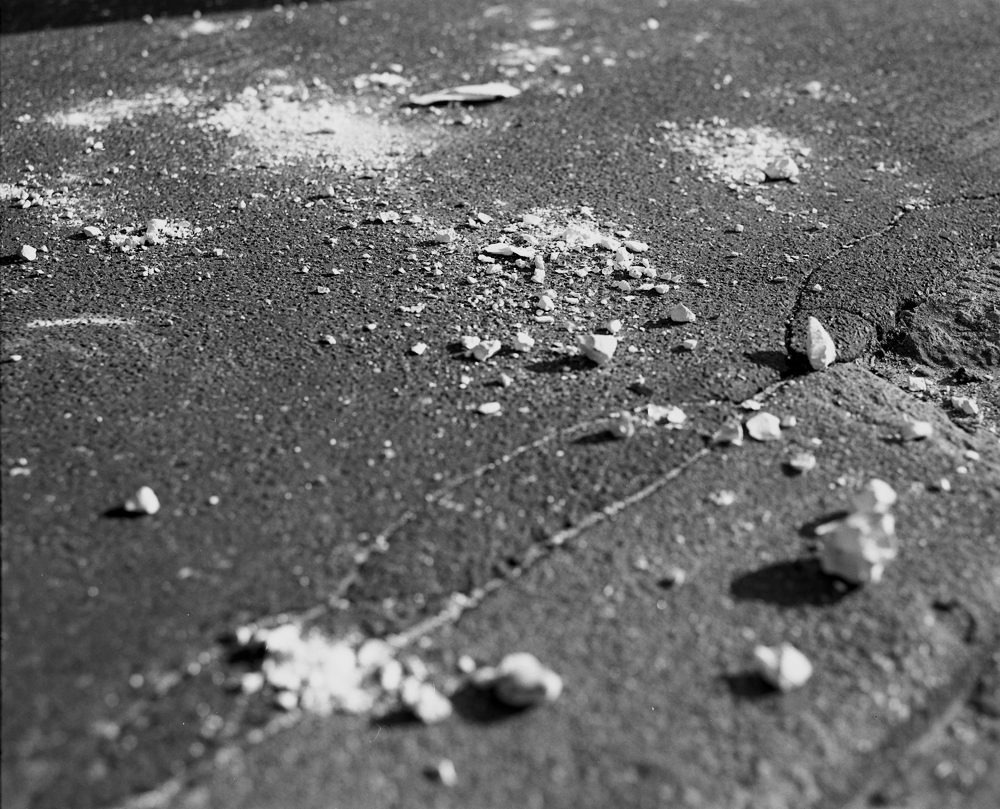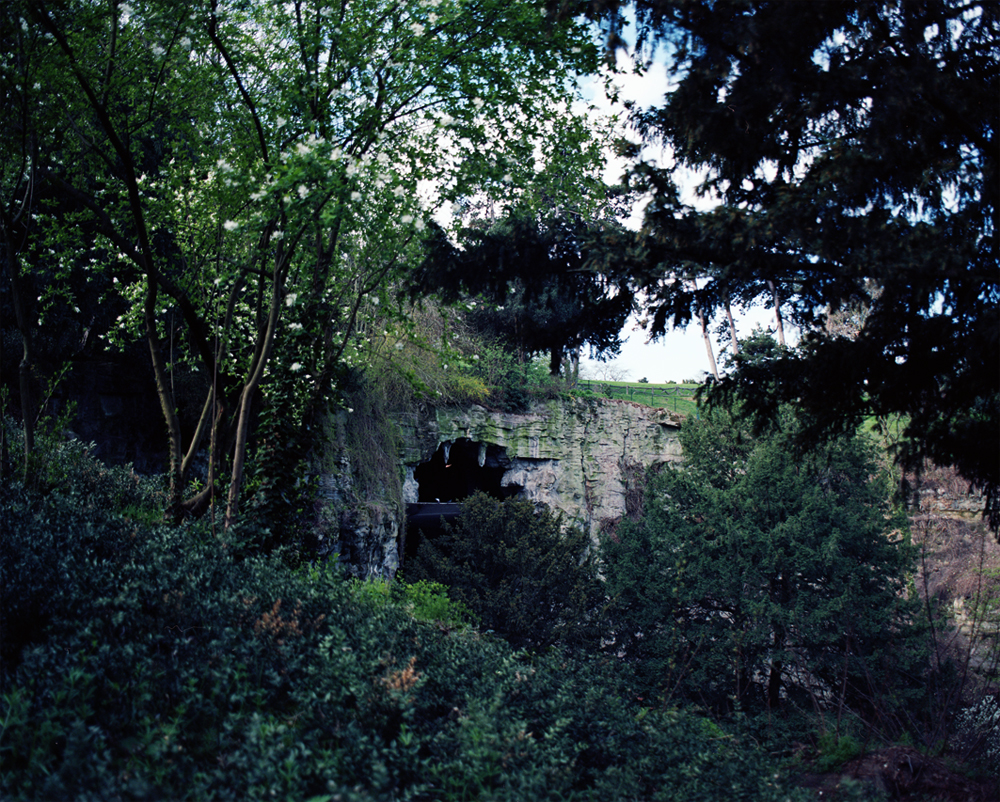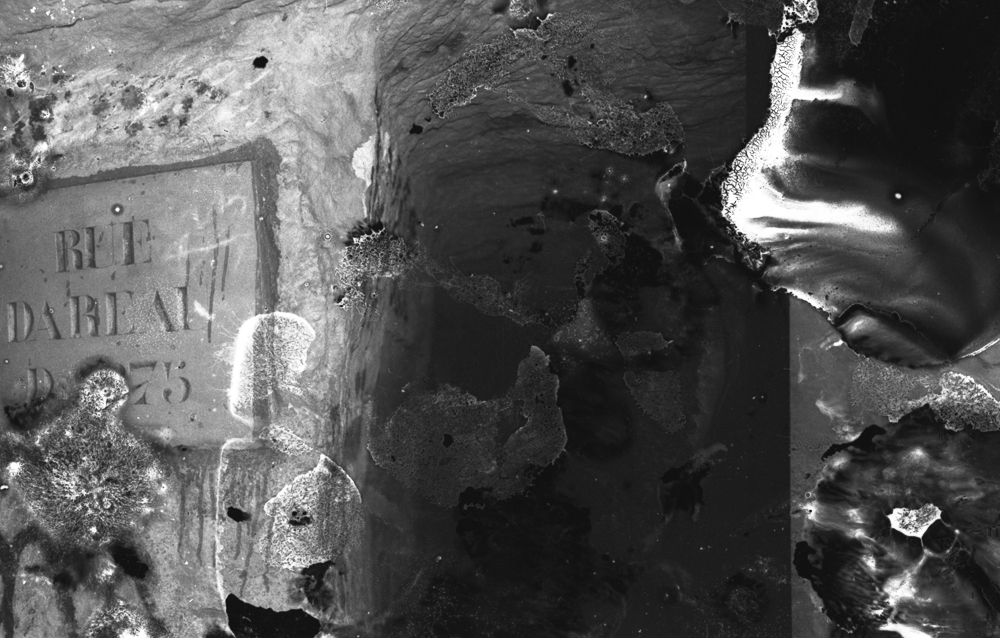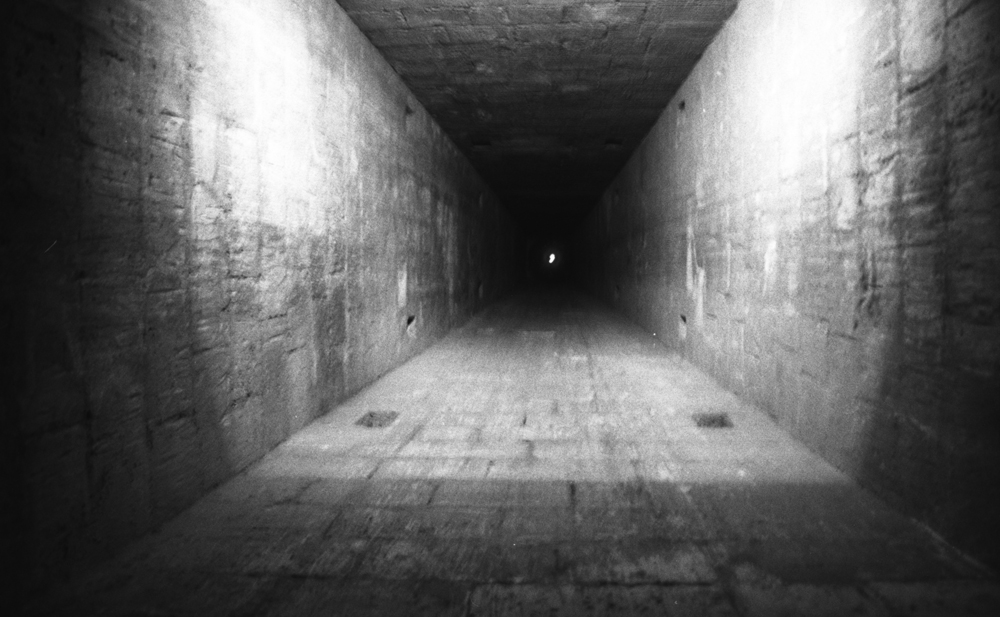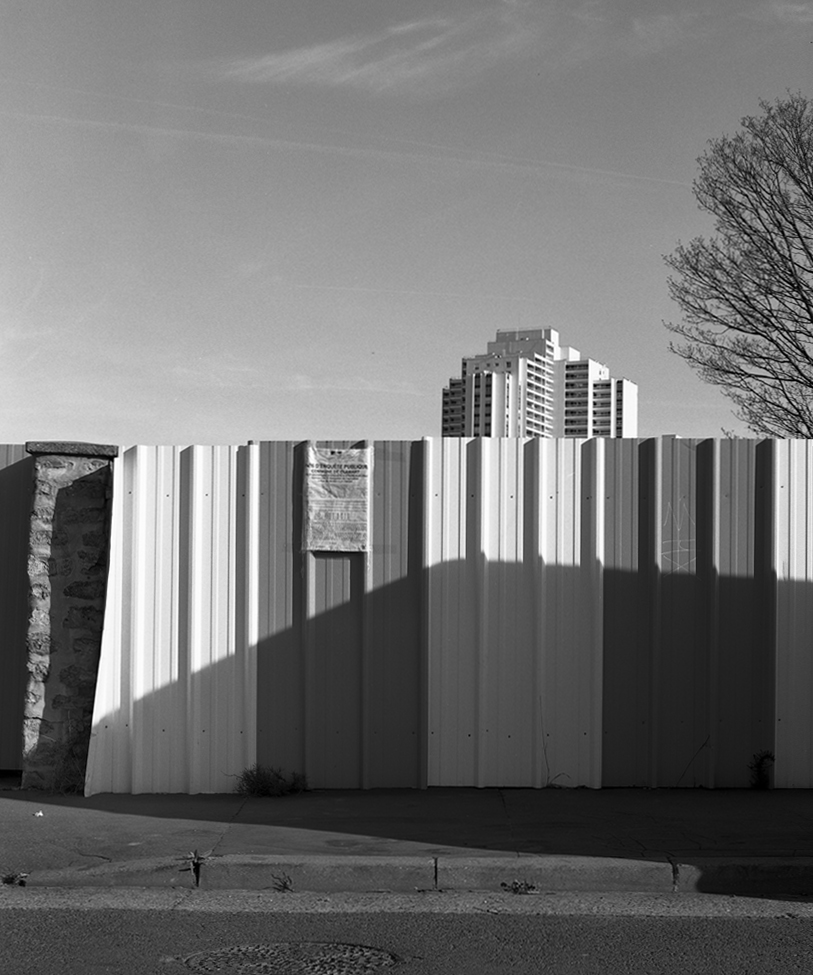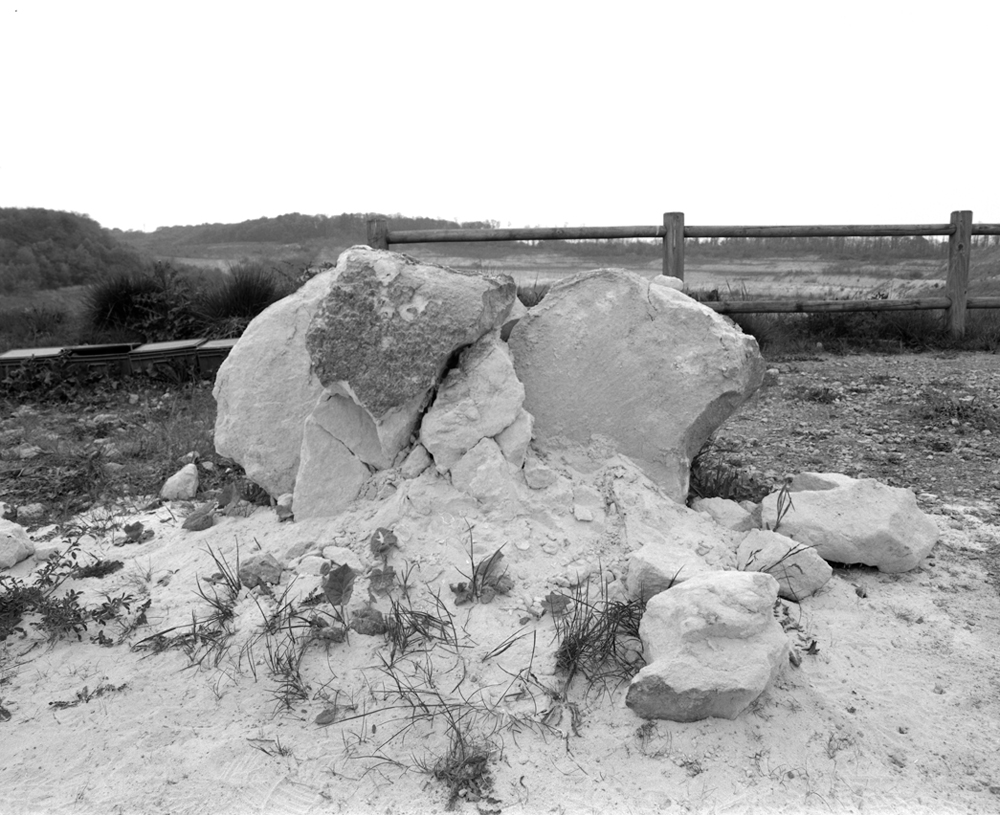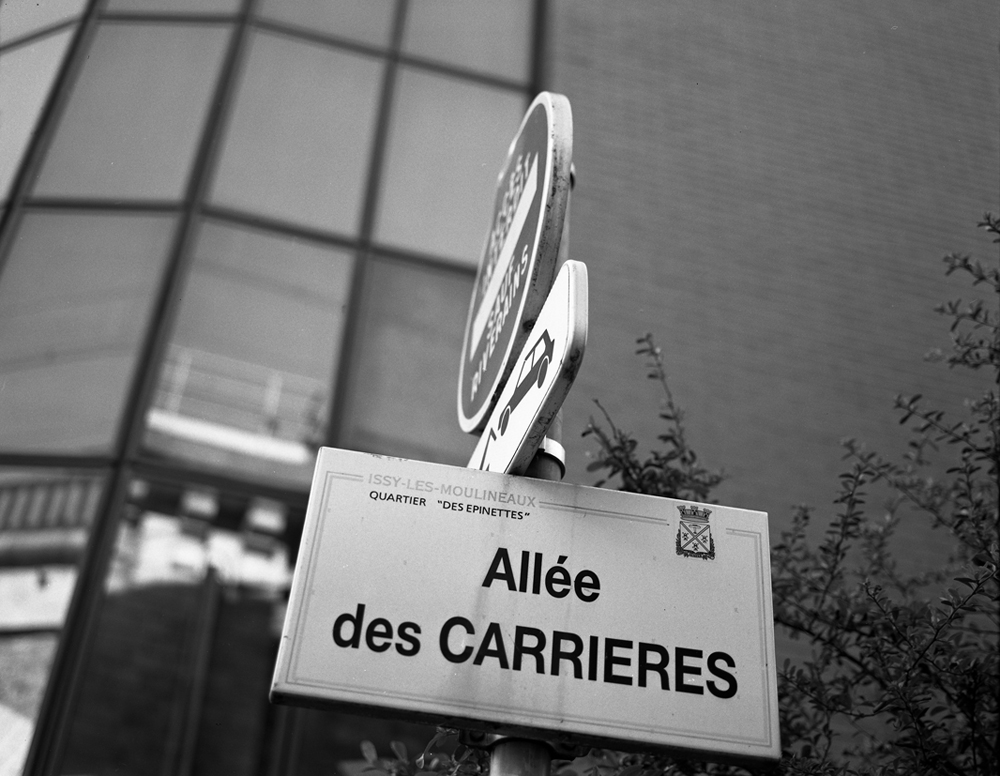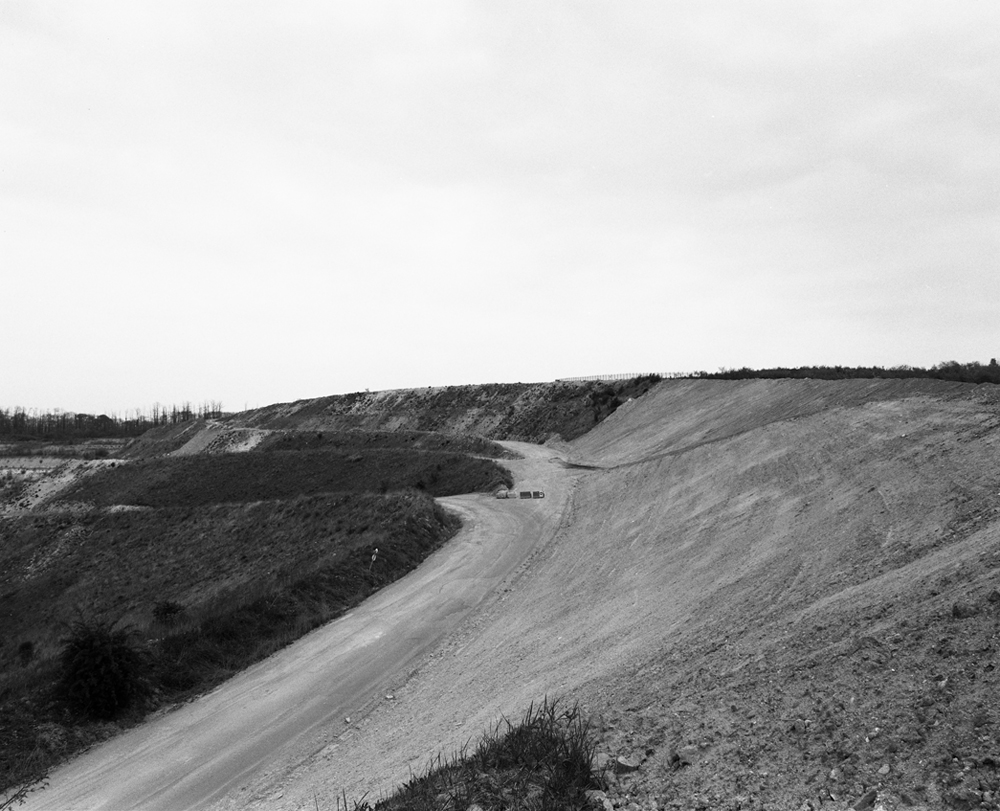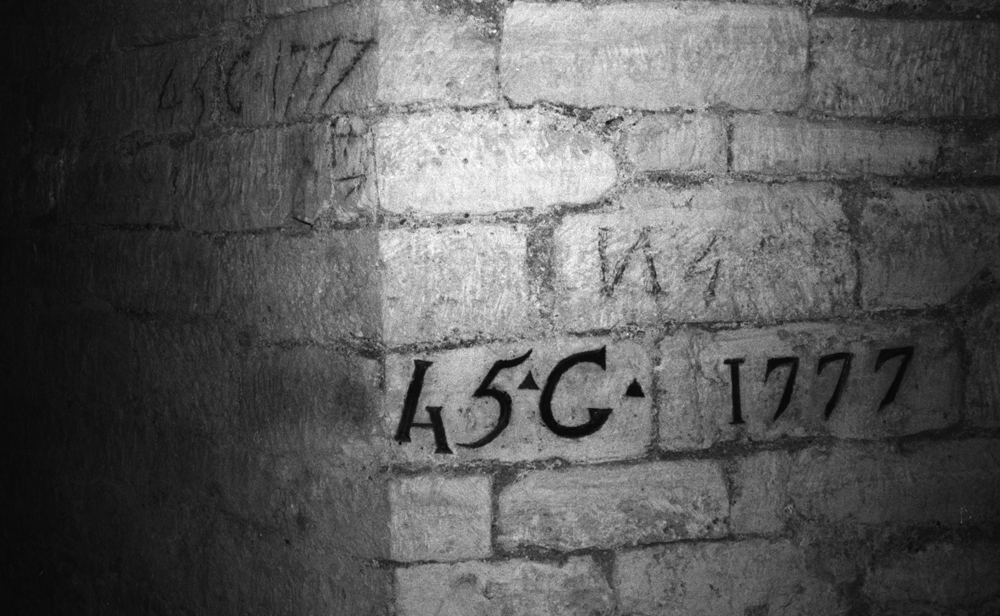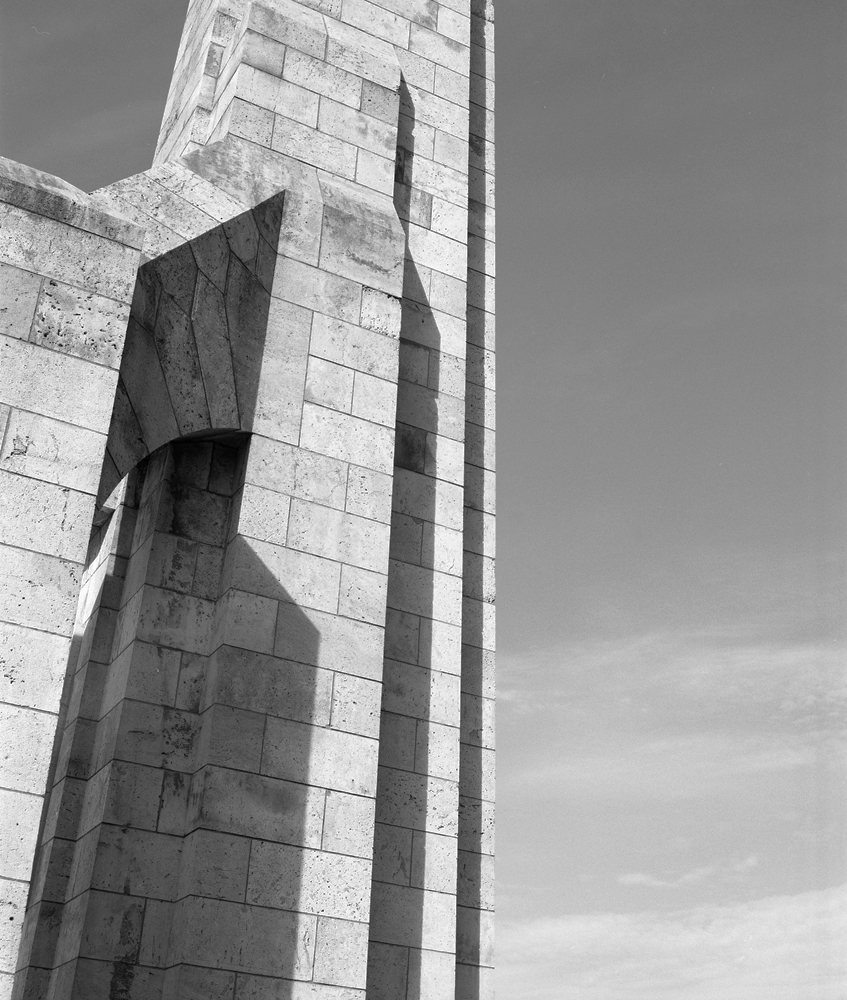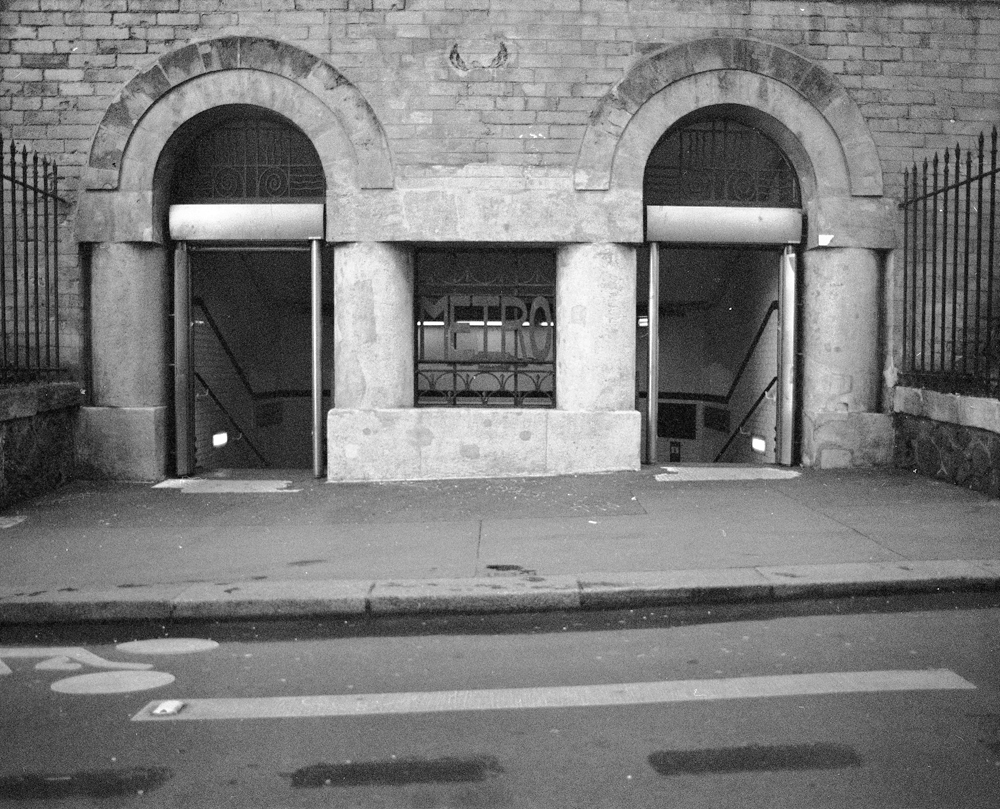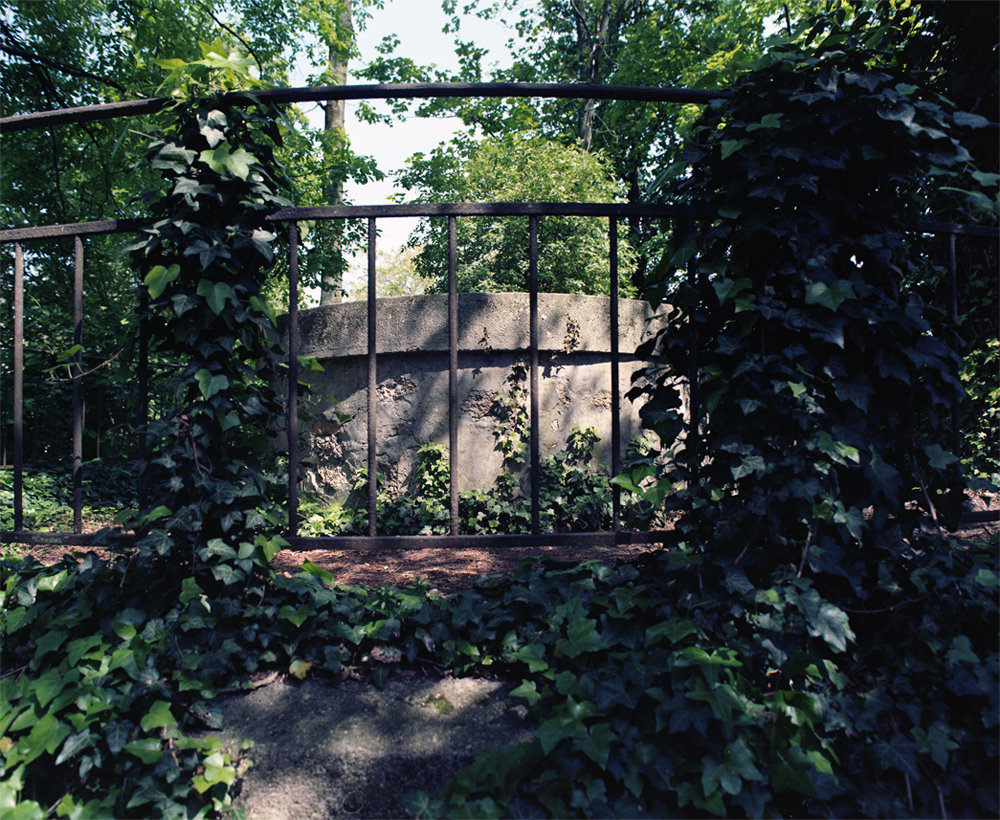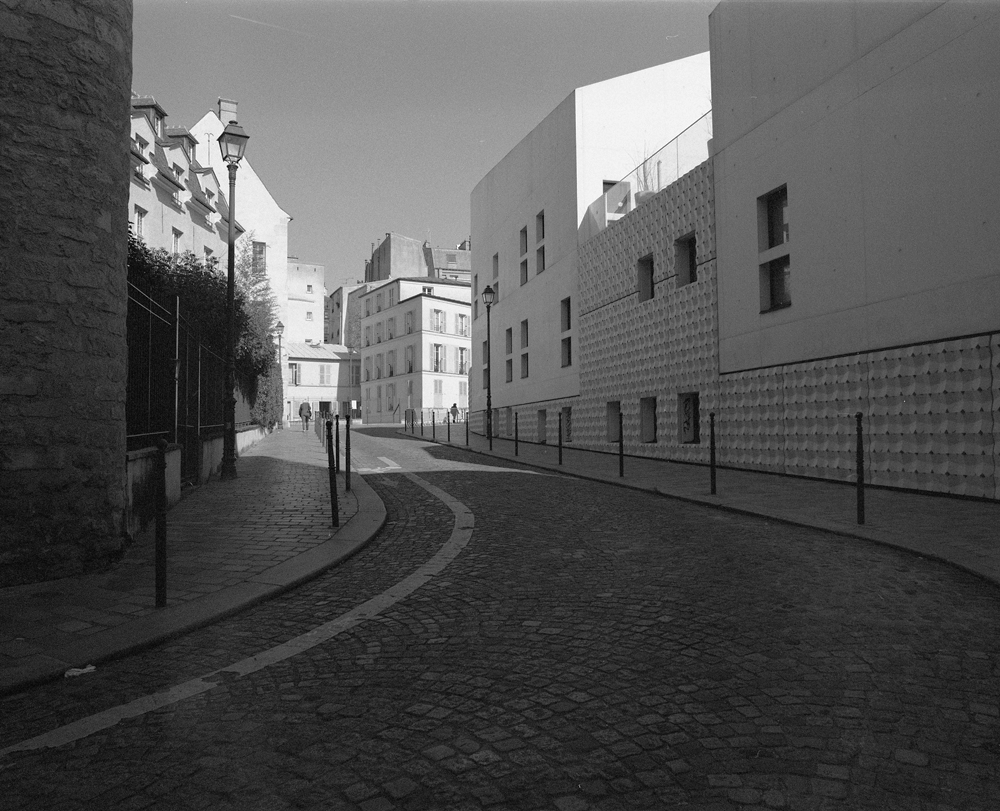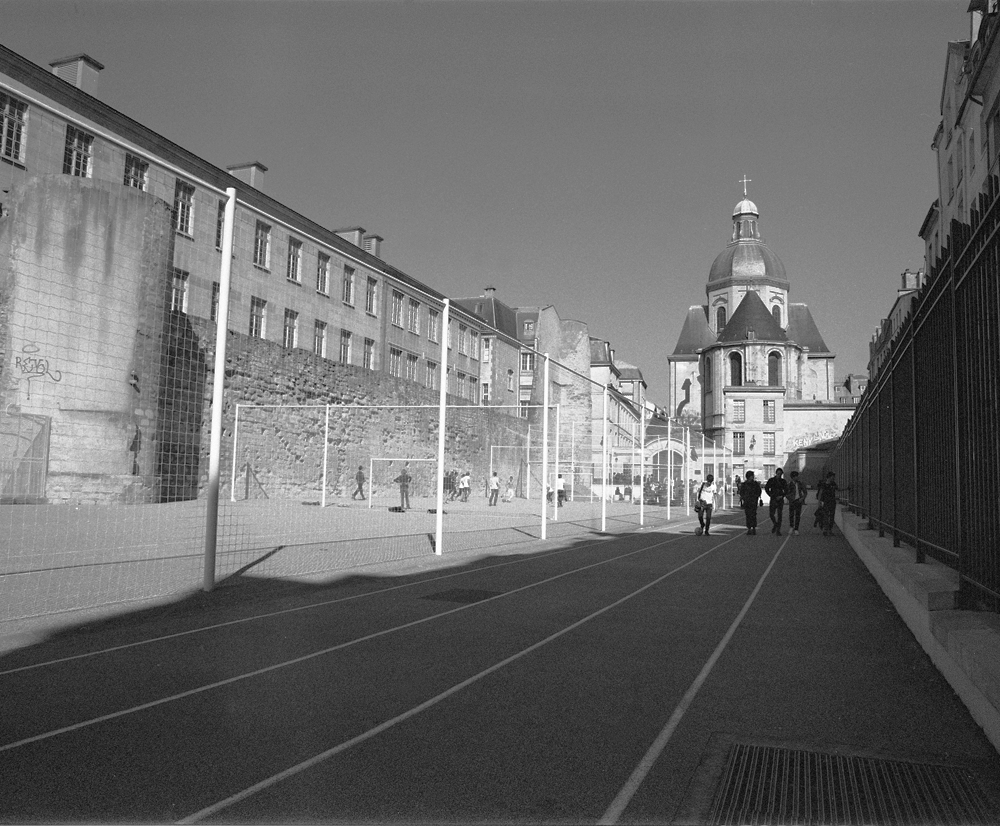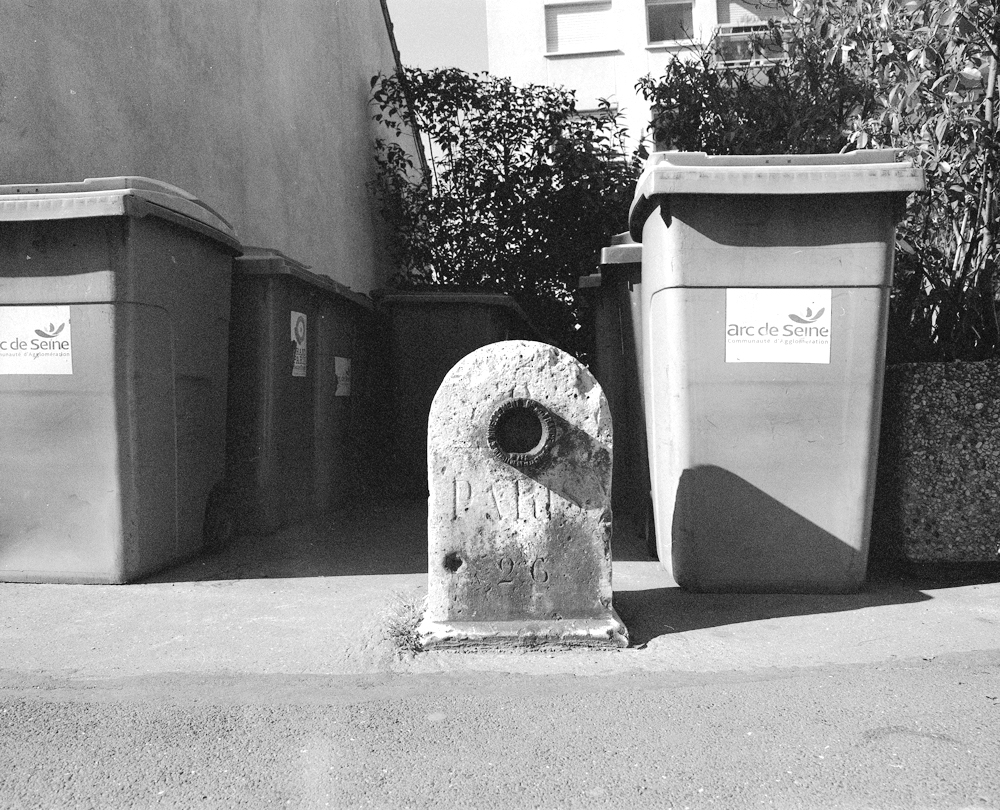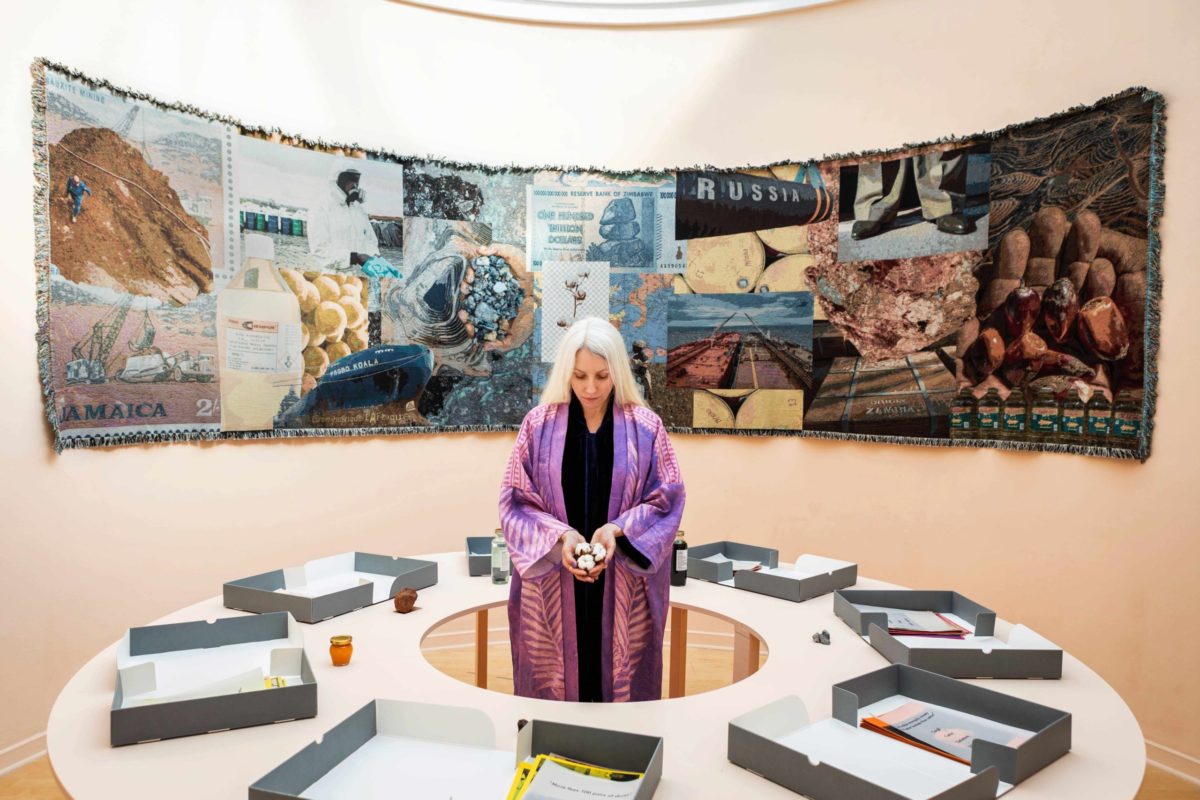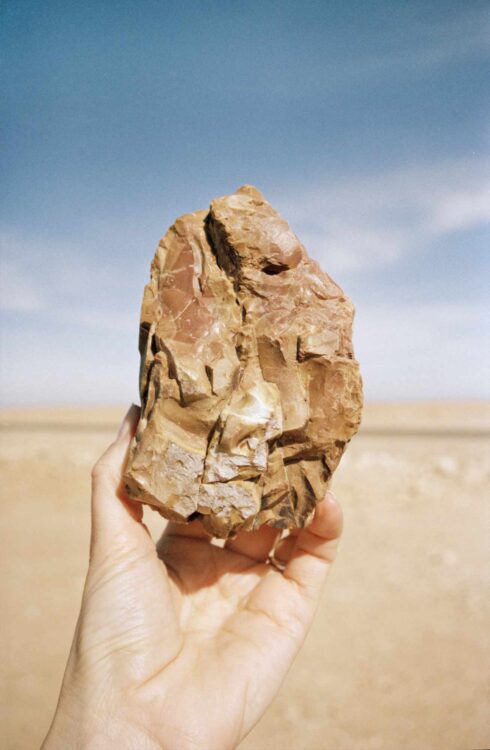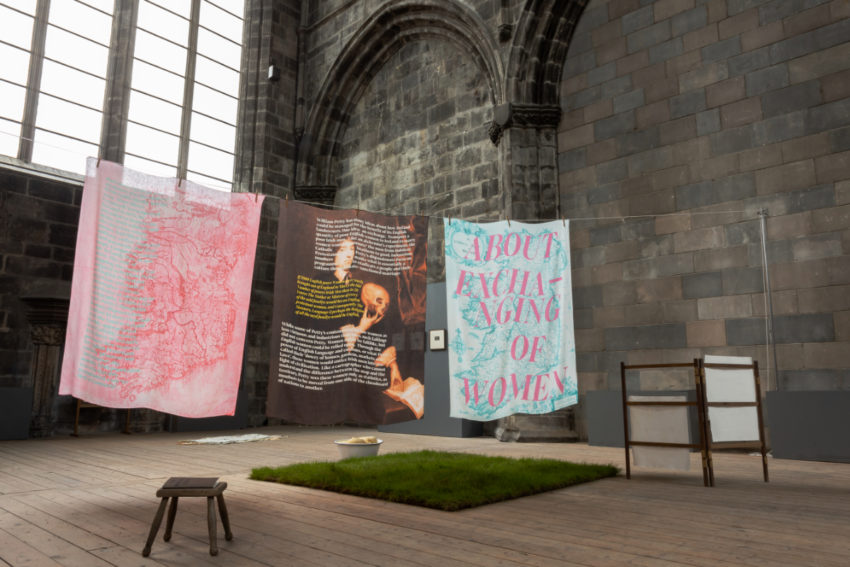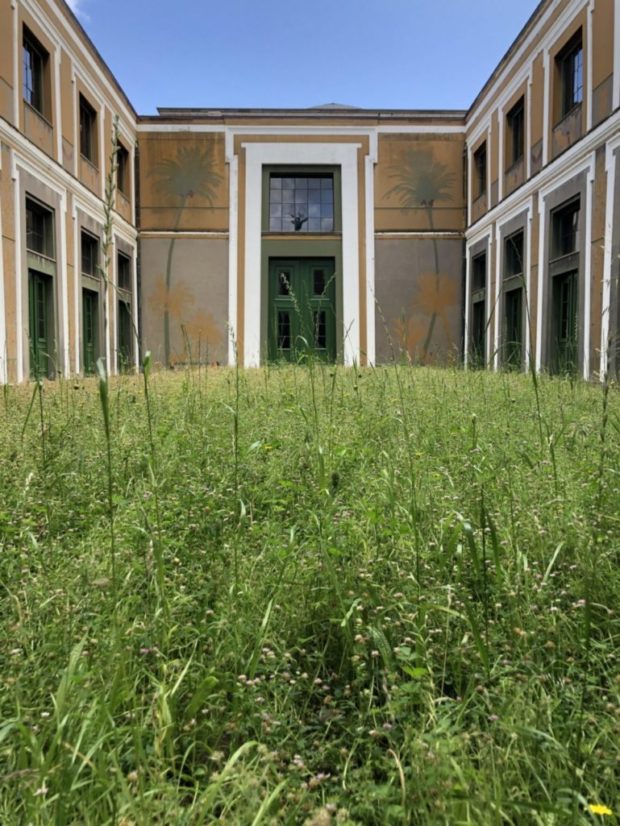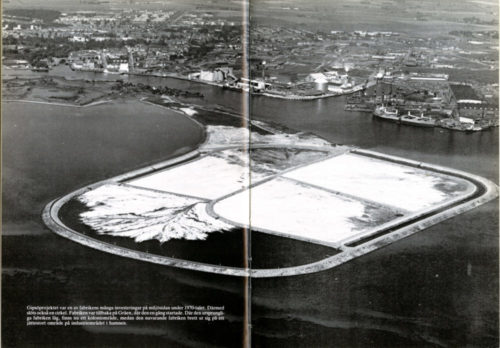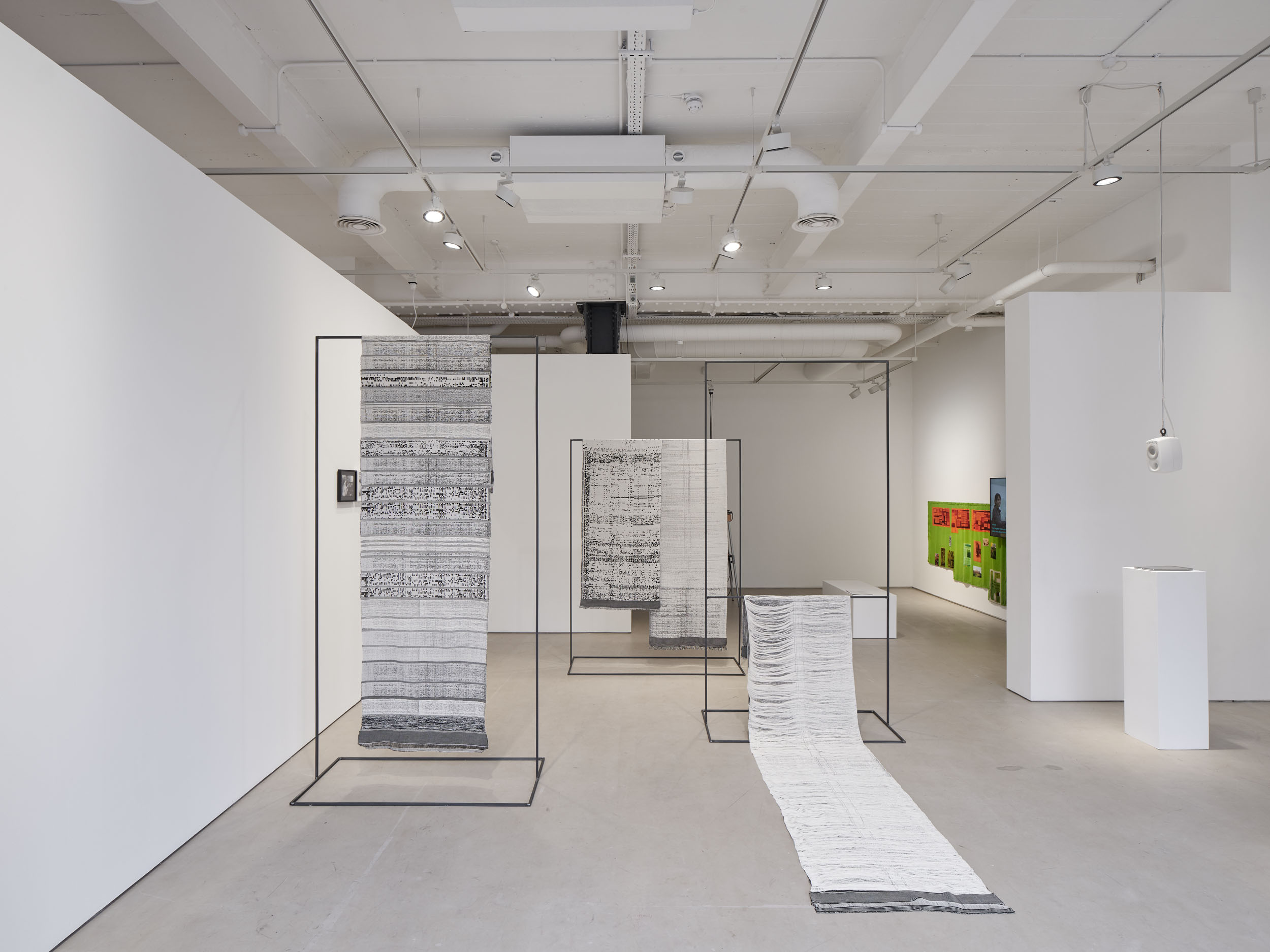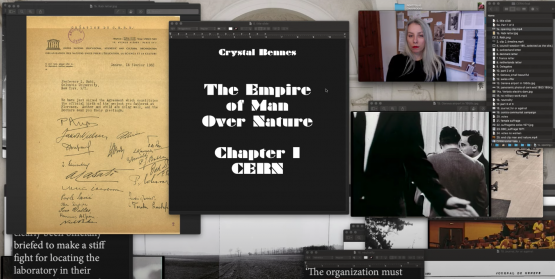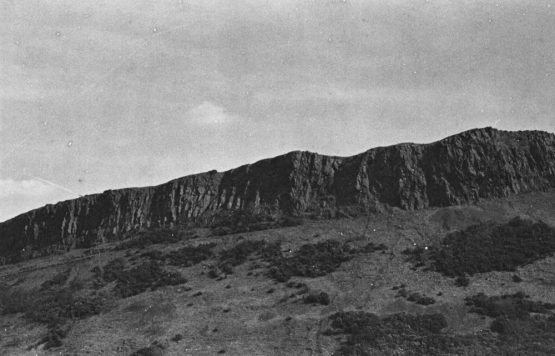An ongoing photographic project on the relationship between quarrying and Paris which looks at the history, labour, materials and processes which contributed to the building of the city and the ways in which, historically and physically these things have become invisible, despite the fact that much of the infrastructure is just below the surface of the city.
There are three intersecting elements at play: the two major geological materials, limestone and gypsum; the relationship between the geology underneath Paris and the evolution of its built environment; and cultural memory in relation to the former two elements.
Among other things, the project looks at the earliest histories of quarrying in Paris during Roman times, the legacy of which is visible today in the 1st-century amphitheatre in the 5th arrondissement and invisible in many more places, including the site of one of the city’s earliest open-pit limestone quarries on what is now a nursery near Les Gobelins.
It also looks to the foundation of the first Inspectorate General of the Quarries [L’Inspection Générale des Carrières], established by Louis XVI in the late-seventeenth century after a series of devastating street collapses. Stones from the quarries underneath what is now Paris’s Rive Gauche (little more than countryside fields when the limestone was extracted) were used to construct almost all of the city’s notable landmarks, including Notre Dame and the Louvre. As the city’s boundaries spread, houses and businesses were built over the former quarries whose locations were gradually forgotten – hence the collapses! Not only did the Inspectorate – under the leadership of Charles-Axel Guillaumot, former architect to the king – painstakingly map the entire underground network of former quarries, but they also reinforced these underground networks with new walls and pillars. Having been lucky enough to spend time in these networks of former quarries underneath the city, it is remarkable to see that, thanks to the reinforcement works by the IGC, in certain areas of the city, the underground streets almost exactly mirror the above-ground streets.
There is also an important link between the Paris of today and the way in which many parts of the city reflect the networks of underground quarries or locations of former quarries. For example, many large public parks in Paris have been constructed on top of former quarries (e.g. Parc Montsouris, Trocadero, Square Louise Michel, Buttes-Chaumont).
Something which particularly interests me, but which hasn’t yet been incorporated into the project is the way in which the reputation of Parisian limestone has been appropriated by others as a status symbol. When Pierre Omidyar, the founder of eBay, decided to build a mansion in the desert in Nevada, he came to Paris to pick out limestone for his house in the quarries to the north of the city. The University of Stanford has reserved a whole section of one of these quarries for its new science buildings.
There’s also the issue of contemporary maintenance because, although the Inspectorate still exists, it works in a very different way. Rather than preserve and reinforce the structure and integrity of the underground quarries as has been done for centuries – with additional limestone pillars and walls – today holes are drilled down from the surface and filled with concrete. Since the quarry networks were made forbidden to public access in the 1950s, I think historically, Parisians have wiped them from their memory. They only really think about what’s below-ground when a road collapses (there are some seven incidents per year) or when there’s a bad TV documentary about teenagers who hold underground raves or a news story about foolish kids getting lost in the quarries. To a certain extent, this project is a small attempt to highlight the historical importance and interconnectedness of the quarries to the city so that there is a greater appreciation of them as historic sites. The Catacombs of Paris are one of the most-visited tourist sites in the city, but they are a Victorian Gothic version of the old quarry networks which do not give a sense of the men who used to work in these places or their importance to the city itself.
IMAGES
- 1908 map of gypse (green) and limestone (salmon) exploitation in Paris.
- Cast model of a geological section of the Paris Basin
- Chalk
- Entrance to the former gypse quarries in the Buttes-Chaumont park, later turned into a grotto as part of Haussmann’s grand works
- A photograph taken in the Grand Réseau Sud, a vast network of former limestone quarries 30m below the Rive Gauche. The film was developed and then buried in the GRS for five weeks before being printed. Humidity in the quarries degraded the emulsion on the negatives, resulting in the strange patterns.
- In the GRS, looking up an access tunnel to street level 30 metres above.
- The site of a 19th-century limestone quarry in Clamart, a near south-western suburb of Paris. Landowners in France are responsible for the security of their properties both above and below ground. Consequently, many former quarry sites remain undeveloped as the expense for reinforcement works is too great.
- Boulders of gypse at a large open quarry in Cormeilles-sur-Seine, a suburb of Paris to the north west. Underground quarrying of all kinds was banned in Paris in 1813, later followed by the banning of all mining activity in the 1860s. While the former principally affected limestone quarrying, which had already begun to move further afield, the latter had a particularly strong impact on the open gypse mines in the area which later became Buttes-Chaumont park. Gypse is, of course, used in the fabrication of plaster – a material which, like limestone, holds special significance for Paris, hence, Plaster of Paris.
- Quarry-workers Alley, Issy-Les-Moulineaux
- Gypse quarry, Cormeilles
- A reinforcing pillar constructed in the former quarries underneath the Cochin Hospital in the 16th in the year 1777 by Charles-Axel Guillaumot.
- Sacks of limestone in the Louvre courtyard.
- The Pont de la Tournelle. A beautiful bridge originally built in wood in TK year. It later burnt down and was eventually rebuilt in Paris’s trademark Lutetian limestone. In TK year, it was destroyed and, despite its current appearance of stone construction, it was rebuilt in concrete — the limestone is merely a facade.
- Arènes metro station in the 5th. The remains of the Roman amphitheatre, rediscovered only in 18TK, include some of the oldest quarried limestone in all of Paris.
- This ventilation tunnel leads directly into the former quarries of Montsouris Park in the 16th. Another transformation wrought by Haussmann’s changes, Montsouris Park occupies the site of another former limestone quarry. The access tunnels of the old quarry are where the park’s lake now sits, but other tunnels still run underneath the park, including those below this vent shaft.
- Rue Gustave Geffroy, 13th arrondissement. In 2011, amidst construction for the building of a new nursery, archeologists for the city of Paris discovered what they claimed to be the oldest open limestone quarry in Paris, potentially dating from the era of Roman occupation. Although much research took place on-site, the quarry does not, rather tragically, seem to have been conserved. The building on the right is the new nursery, constructed on top of an open limestone quarry, possibly dating from the Roman era.
- Playground of the Lycée Charlemagne, 4th arrondissement. This playground is a recent addition and stands in front of a section of the large fortification wall of Philippe Auguste constructed (from limestone, of course) around the end of the 12th century.
- Distance marker, Clamart. On 1 June, 1961, Clamart was the site of a horrific accident in which six entire streets collapsed, 23 houses were completely destroyed and 21 people were killed. As with the rue d’Enfer collapse of 1774, the accident in Clamart also took place on the site of former chalk quarries — the ground had not been adequately reinforced and the streets collapsed.
